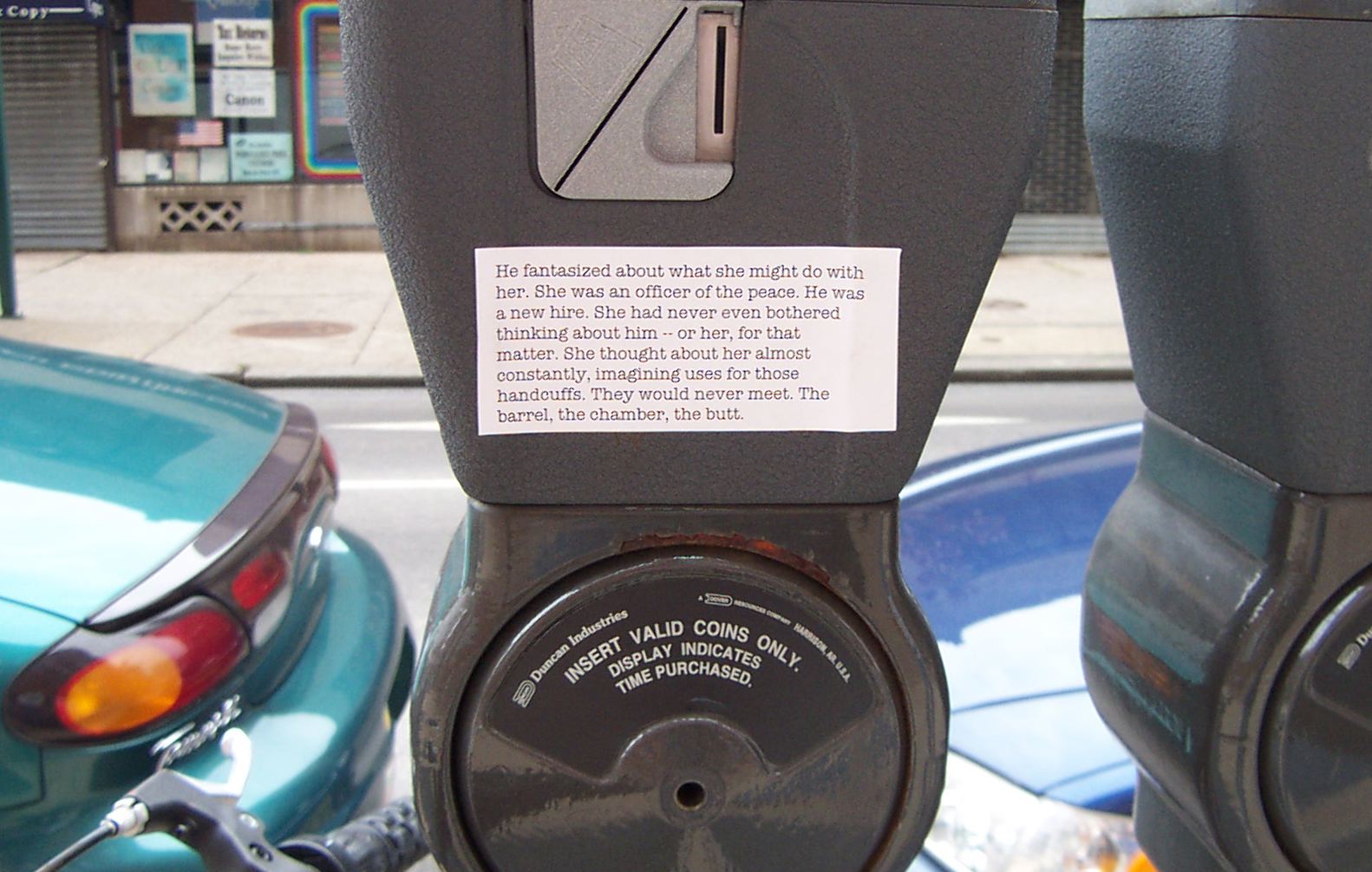
Project Description
http://nickm.com/montfort_rettberg/implementation
Nick Montfort and Scott Rettberg
NM: http://nickm.com
SR: http://retts.net
5 January 2004
We will deploy, post, exhibit, and read from Implementation.
Implementation borrows from the traditions of net.art, mail art, sticker art, conceptual art, situationist theater, serial fiction, and guerilla viral marketing.
Implementation is a novel about psychological warfare, American imperialism, sex, terror, identity, and the idea of place. The text is being written collaboratively by Nick Montfort and Scott Rettberg with some contributions from others. Its initial incarnation is as a serial novel printed on sheets of stickers that will be distributed in monthly installments beginning in January 2004.
Implementation begins as sheets of stickers, with a different text on each sticker. We will distribute these sheets to individuals, both personally and via post. Instructions, asking people to peel the stickers off and place them in an area viewable by the public, will accompany the sheets. The sheets themselves will not explain the project, but will refer interested parties to the website http://nickm.com/montfort_rettberg/implementation where they can learn more about Implementation.
We will deploy Implementation internationally and work to bring it into unusual geographical and cultural contexts. We will encourage the translation of texts into other languages and will host any translations that are done on the project website.
On the Implementation website, there will be photographs of previously-posted stickers, in situ, and the texts of those stickers; these will be from installments previously mailed out and distributed. We will update the site with pictures of stickers that we encounter on various surfaces, and with any Implementation photos that we receive.
We will perform literary readings of Implementation. The first will be on 14 February 2004 at the Kelly Writers House in Philadelphia. We will project photographs of the stickers in various different sites as we read the texts on these stickers. We will wear suits.
Several overlapping categories of people will experience the project in a potentially meaningful way. People who have sheets of stickers and who read all the texts of the novel, or of an installment, are "sheet readers" and define one of the audiences/readerships of the project. People who see the stickers situated around in the environment are "place readers." People who visit the website, view images of posted stickers, and read the corresponding texts online are "web readers." Additionally, some people will hear us read texts from the project during literary readings and will experience the project as an audience. Finally, those who post stickers in public places, photograph them, and send photographs to us constitute another group. These people are called "participants."
During the normal course of the mailout, sheet readers will be specifically encouraged to become participants since they will only earn the next installment of Implementation by post if they send us such a photograph, either emailing us a digital photo or sending us a print in the mail. After a period of time, each installment will be made available online, at the website, so that people can download the texts and (if they desire) print them onto stickers themselves.
Although Implementation shares certain features with hypertext fiction—coherent standalone texts which, when read in isolation, function as individual stories, scenes, or aphorisms—as a novel the project is unlike the typical hypertext work in several ways. It functions in the whole as a coherent narrative, as will certainly be clear to sheet readers who receive and read all the installments, and will probably be clear to web readers as well. Participants and place readers make choices, but these choices are not of the "choose-your-own-adventure" or even "follow-this-link" variety. Web readers will have an experience closest to that of a typical hypertext reader, but even then, the presence and order of material on the site will be determined by participants. The most interesting interactive aspect of Implementation will lie in how participants choose to situate the individual stickers and in how they photograph these placements. We hope that this form of interaction will engender new and unanticipated meanings as Implementation is situated in specific public spaces that resonate with the texts in different ways.
A sticker from a project by Nick Montfort and Scott Rettberg, March 2002. Stickers from a single sheet were distributed to friends and, beginning in January 2003, by Spineless Books. Customers can choose to receive a sticker from what Spineless calls "Untitled Sticker Series for Bathroom Stall Wall." Stickers have been placed in several cities, including Los Angeles, Philadelphia, Chicago, New York, and Urbana. This project led Montfort and Rettberg to undertake Implementation.